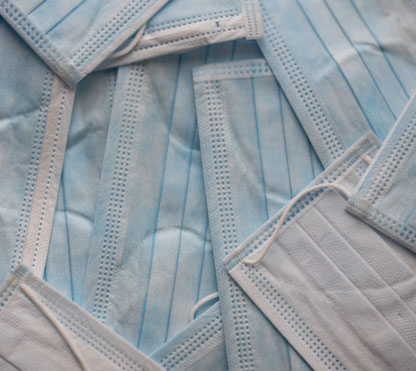Fabric Mask Testing Requirements
What is a fabric mask?
A fabric mask, also known as community mask, is a loose-fitting reusable mask made of cotton or other textiles. It is often homemade and not considered as medical device/ PPE, providing lower protection against diseases in comparison to medical mask and respirators due to minimal design. It covers wearer’s nose and mouth with fabric to prevent transmission of large particles.
The effectiveness of fabric mask largely depends on the fabrics use and its construction, such as the number of fabric’s layer, how well the mask fits.
Unlike medical mask and respirator, there is no official regulation on fabric masks. Instead, voluntary standards are established by recognized bodies for measurement of fabric mask performance and quality.
Regulatory compliance in different markets
Market-Specific Regulatory Compliance | |||||
| Country | Type of Specification | Regional Regulation / Standard/Guidelines | Barrier Performance | Test Method | Requirement |
| Belgium | National Standard | NBN/DTD S 65-001:2020 | PFE | EN 13274-7:2019 | ≥ 70% |
| BFE | EN 14683:2019+AC:2019 Annex B | ≥ 70% | |||
| China | Association standard | T/CSTM 00387-2020 | PFE | GB/T 38413-2019 | PM 2.5 daily reusable protective mask |
| As received: ≥ 95% | |||||
| After care: ≥ 90% | |||||
| General daily reusable protective mask: | |||||
| As received: ≥ 90% | |||||
| After care: ≥ 85% | |||||
| EU countries | Reference document from the CEN Members | CEN Workshop Agreement CWA 17553 | PFE | EN 13274-7:2019 | Particles size: 3 microns |
| Level 90%: min 90% | |||||
| Level 70%: min 70% | |||||
| France | Regulation | French Cross Ministries Note (NOTE d’INFORMATION du 29 mars 2020 Mise a jour le 26 avril) Mandatory requirement in France | PFE | Dissolved gas analysis (DGA) method Annex 2 or equivalent | Particles size: 3 microns: |
| > 90% for UNS Class I | |||||
| > 70% for UNS Class II | |||||
| Guidelines | AFNOR Spec S76-001 v1.1 | PFE | DGA method Annex 2 or equivalent | 3 microns particles: | |
| > 90% for UNS Class I | |||||
| > 70% for UNS Class II | |||||
| Germany | Recommendation | BfArM recommendations | - | - | Attention on marking and labeling issue |
| Ireland | National standard | SWiFT 19:2020 | BFE | EN 14683:2019+AC:2019 Annex B | ≥ 70% |
| Portugal | Portugal specifications | Masks intended for use under COVID-19 technical specifications 1 | PFE | EN 13274-7:2019 | Level 2: ≥ 90% |
| Level 3: ≥ 70% | |||||
| BFE | EN 14683:2019+AC:2019 Annex B | Level 2: ≥ 90% | |||
| Level 3: ≥ 70% | |||||
| South Africa | Recommendation | Recommended Guidelines | PFE | EN 13274-7:2019 | Particle size: 5 microns |
| ≥ 75% | |||||
| Spain | National standard | UNE 0065 | BFE | EN 14683:2019 + AC: 2019 Clause B | ≥ 90% |
| Switzerland | Recommendation by task force | Swiss National COVID-19 Science Task Force | PFE | Particle size: 1μm | ≥ 70% |
| United Kingdom | Recommendation | BSI guide to masks and face coverings for use in the UK during the COVID-19 pandemic | PFE | EN 13274-7:2019 | Requirement to be determined by the Cabinet Office/Department for Business, Energy and Industrial Strategy (BEIS) |
| United States | National Standard | ASTM F3502 | PFE | Sub-micron PFE method. Contained within specification | Level 1: ≥ 20% |
| Level 2: ≥ 50% | |||||
| Recommendation | AATCC M14 | PFE | Particle size: 3 μm | ≥ 70% | |
| Canada | Recommendation by industry | General Purpose Woven Face Coverings – Guidance and Considerations | *Not Applicable | ASTM F2299 or technical equivalent, with modified micron size | 3 micron particles >= 70% filtration efficiency as minimal |
Key testing parameters
While there are many testing parameters for measuring the quality and performance attributes of community masks, below are key testing parameters to take note of:
| Test Parameter | Test Objective | Suggested Measurement/ Method |
| Harness | How well does the strap or harness of the mask stay secured and fit | Put on and remove the mask for 5 times, repeat head morphologies for 3 times |
| Skin Contact | Ensuring the materials used are not harmful or will cause irritation to wearers | No detailed chemical requirement defined. Required to follow key REACH restrictions on chemical and pH level for skin contact materials |
| Particle Performance | Resistance of mask against particle of a size of 3 (± 0,5) μm | EN 13274-7 is widely used. It requires ≥90% filtration for masks used in high content situations and >70% for masks used in other general public environment* |
| Breathing Resistance | Easiness of the wearer to breath comfortably in the mask | 2 recommended methods: EN 14683 Annex C to reach maximum value of 60KPa, or ISO 9237 to perform air permeability test |
| Cleaning and Drying | Ensuring the mask can endure washing and drying, and meets performance requirements after multiple washes | Wash the mask for at least 5 times at a temperature of 60°C |
*Other methods are available and can be founded in Annex B of EN 13274-7

